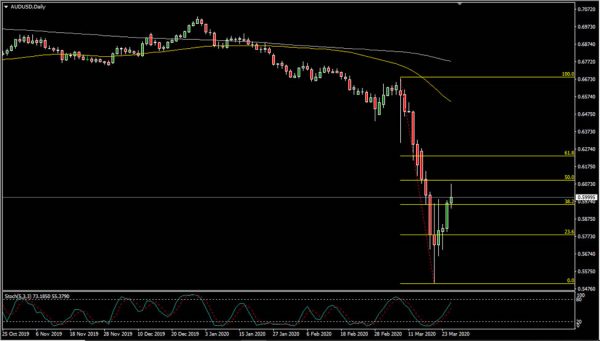The Australian dollar, New Zealand dollar and Canadian dollar powered higher in early trading on Wednesday. The ‘comdolls’ were lifted as fresh stimulus hopes boosted risk appetite and global equity markets rebounded.
After US lawmakers reached a $2 trillion aid deal on Tuesday, the Dow rallied by 11%, marking its largest gain since 1933. The massive relief package aims to provide financial support to businesses, hospitals and American families left in need as a result of the coronavirus pandemic.
However, upcoming economic data is expected to reflect the profound damage to the economy caused by the fallout from the coronavirus. Federal Reserve Bank of St. Louis President James Bullard told Bloomberg on Sunday that unemployment could rise as high as 30% and gross domestic product could plunge by 50%.
According to data from Johns Hopkins University, at the time of this writing Coronavirus COVID-19 global cases have risen to 435,006, with 19,625 fatalities. On Tuesday, the death toll in Italy from the pandemic increased by 743 in one day to 6,820. Meanwhile, WHO spokeswoman Margaret Harris told reporters that the US has the “potential” to overtake Europe as the new epicenter of the coronavirus.
China is the largest trading partner for both Australia and New Zealand and consequently their currencies have been particularly hard hit during the crisis. The Canadian dollar, which has a close positive correlation with crude oil, has also suffered due to the oil price war between Saudi Arabia and Russia. These three currencies (AUD, NZD and CAD) are known as ‘comdolls’ because their respective economies are highly dependent on exporting commodities. They are viewed as risk sensitive currencies and tend to perform better during periods of stability and confidence.
Looking at the AUD/USD daily chart we can see that price nearly reached the 50% retracement of the down move that began on March 9th. The recent low of 0.5503 marks the lowest the pair has been since 2002.


 Signal2forex.com - Best Forex robots and signals
Signal2forex.com - Best Forex robots and signals




